Intro
Discover the General Ledger definition, a crucial accounting tool, and learn about its role in financial reporting, accounting cycles, and ledger accounts, including journal entries and trial balances.
The general ledger is a crucial component of any accounting system, serving as the central repository for all financial transactions within an organization. It is a comprehensive and detailed record of every financial event, providing a clear picture of a company's financial health and performance over time. The importance of the general ledger cannot be overstated, as it forms the foundation upon which financial statements, such as the balance sheet and income statement, are prepared. In this article, we will delve into the definition, components, and significance of the general ledger, as well as its role in financial management and decision-making.
The general ledger is often considered the "book of final entry" because it contains the summarized and consolidated information from various journals and sub-ledgers. This information is then used to prepare the trial balance, which is a list of all general ledger accounts and their corresponding debit or credit balances. The trial balance serves as a critical tool for ensuring the accuracy and integrity of the financial records, as it helps to identify any errors or discrepancies that may have occurred during the accounting process.
In essence, the general ledger is a systematic and organized way of recording, classifying, and reporting financial transactions. It provides a chronological record of all financial events, including revenues, expenses, assets, liabilities, and equity. By analyzing the information contained within the general ledger, businesses can gain valuable insights into their financial performance, identify areas for improvement, and make informed decisions about future investments and resource allocations.
Components of the General Ledger
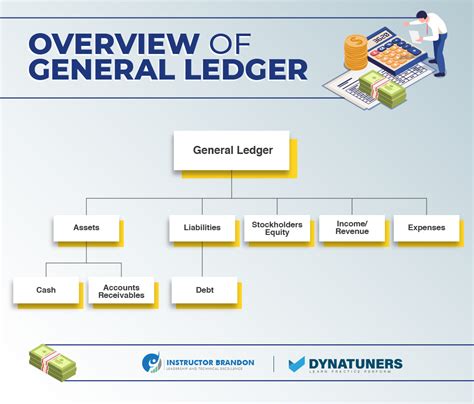
The general ledger consists of several key components, including accounts, journals, and ledgers. Accounts are the individual records within the general ledger that track specific types of transactions, such as cash, accounts payable, or sales revenue. Journals, on the other hand, are the books of original entry where financial transactions are first recorded. The information from the journals is then posted to the general ledger, where it is summarized and consolidated.
Some of the most common types of accounts found in the general ledger include:
- Asset accounts: These accounts track the company's assets, such as cash, accounts receivable, inventory, and property, plant, and equipment.
- Liability accounts: These accounts track the company's liabilities, such as accounts payable, notes payable, and long-term debt.
- Equity accounts: These accounts track the company's equity, including common stock, retained earnings, and dividends.
- Revenue accounts: These accounts track the company's revenues, including sales, service revenue, and interest income.
- Expense accounts: These accounts track the company's expenses, including salaries, rent, utilities, and depreciation.
Importance of the General Ledger
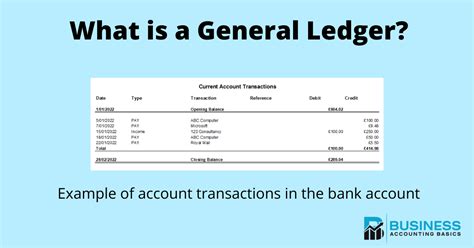
The general ledger plays a vital role in financial management and decision-making. It provides a comprehensive and accurate picture of a company's financial position, performance, and cash flows. By analyzing the information contained within the general ledger, businesses can:
- Identify trends and patterns in financial performance
- Evaluate the effectiveness of financial decisions and strategies
- Develop forecasts and budgets
- Identify areas for improvement and implement corrective actions
- Make informed decisions about investments and resource allocations
In addition, the general ledger is used to prepare financial statements, such as the balance sheet, income statement, and cash flow statement. These statements provide stakeholders, including investors, creditors, and regulatory bodies, with a clear and transparent picture of a company's financial health and performance.
Benefits of Using a General Ledger
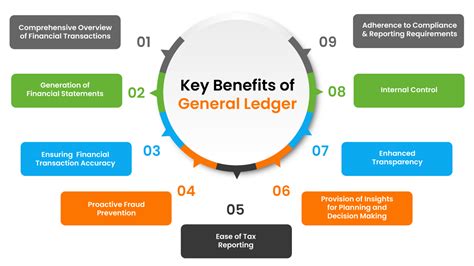
The use of a general ledger offers several benefits, including:
- Improved accuracy and reliability of financial records
- Enhanced financial reporting and analysis
- Better decision-making and planning
- Increased transparency and accountability
- Improved compliance with regulatory requirements
- Reduced risk of errors and discrepancies
In addition, a well-maintained general ledger can help businesses to:
- Identify and manage financial risks
- Optimize financial performance and profitability
- Improve cash flow management and forecasting
- Enhance stakeholder confidence and trust
- Support strategic planning and growth initiatives
Best Practices for Maintaining a General Ledger
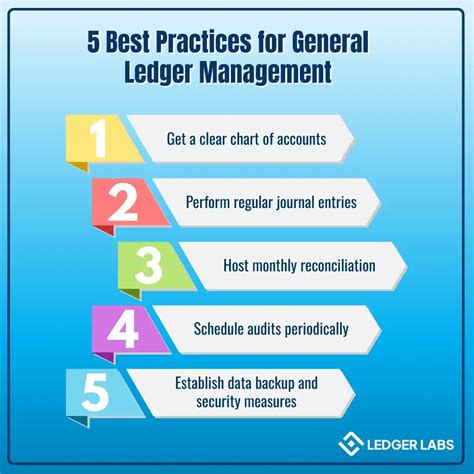
To ensure the accuracy, reliability, and effectiveness of the general ledger, businesses should follow best practices, including:
- Regularly reviewing and reconciling accounts
- Implementing robust internal controls and audit procedures
- Using standardized accounting procedures and policies
- Providing ongoing training and support for accounting staff
- Utilizing technology and automation to streamline accounting processes
- Maintaining accurate and detailed records of financial transactions
By following these best practices, businesses can ensure that their general ledger is accurate, reliable, and effective in supporting financial management and decision-making.
Common Challenges and Solutions

Despite its importance, the general ledger can present several challenges, including:
- Data entry errors and discrepancies
- Inadequate internal controls and audit procedures
- Insufficient training and support for accounting staff
- Ineffective use of technology and automation
- Inadequate financial reporting and analysis
To overcome these challenges, businesses can implement solutions, such as:
- Implementing automated accounting systems and software
- Providing ongoing training and support for accounting staff
- Establishing robust internal controls and audit procedures
- Utilizing data analytics and business intelligence tools
- Regularly reviewing and reconciling accounts
By addressing these challenges and implementing effective solutions, businesses can ensure that their general ledger is accurate, reliable, and effective in supporting financial management and decision-making.
Future of the General Ledger
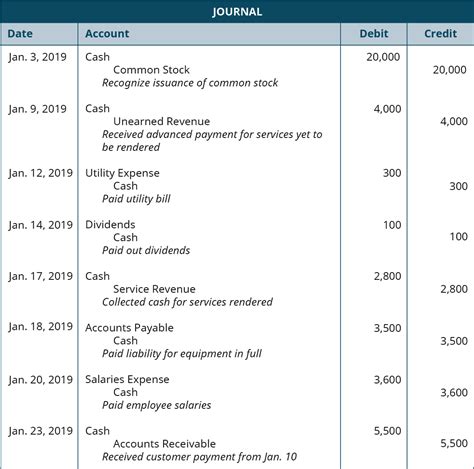
The general ledger is evolving to meet the changing needs of businesses and the accounting profession. With the increasing use of technology and automation, the general ledger is becoming more efficient, accurate, and effective. Cloud-based accounting systems and software are providing businesses with greater flexibility, scalability, and accessibility.
In addition, the use of artificial intelligence, machine learning, and data analytics is transforming the general ledger, enabling businesses to gain deeper insights into their financial performance and make more informed decisions. The future of the general ledger is likely to be shaped by emerging trends, such as:
- Increased use of automation and artificial intelligence
- Greater emphasis on data analytics and business intelligence
- Growing importance of cloud-based accounting systems and software
- Evolving regulatory requirements and compliance standards
- Increased focus on sustainability and environmental reporting
As the general ledger continues to evolve, businesses must be prepared to adapt and innovate to remain competitive and effective in their financial management and decision-making.
Gallery of General Ledger Images
General Ledger Image Gallery
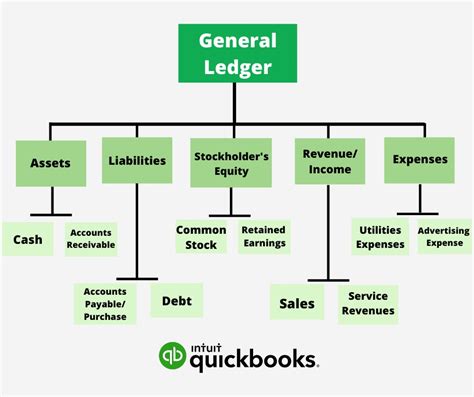
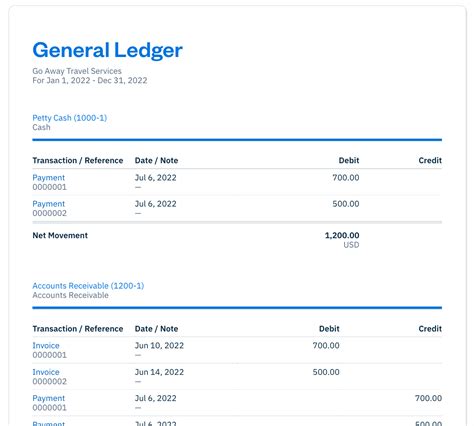
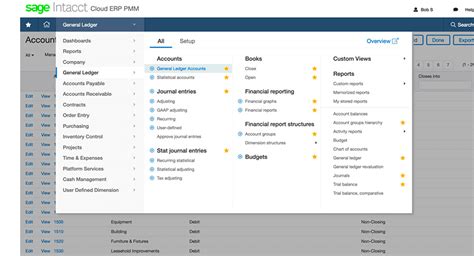
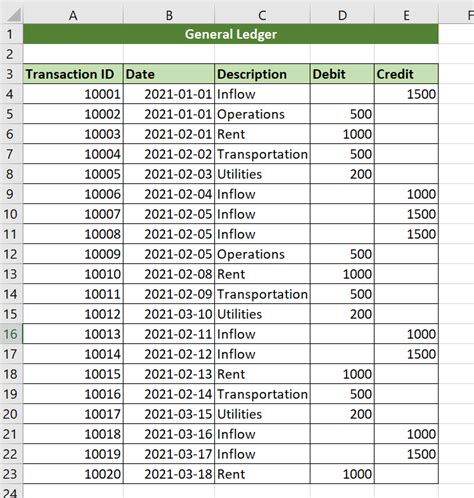
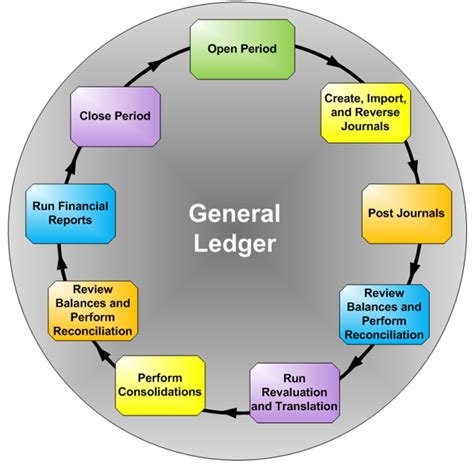
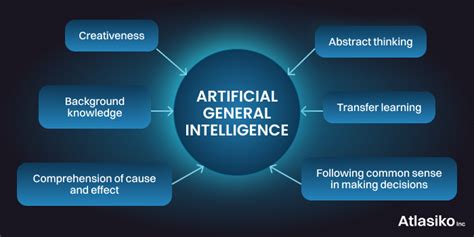

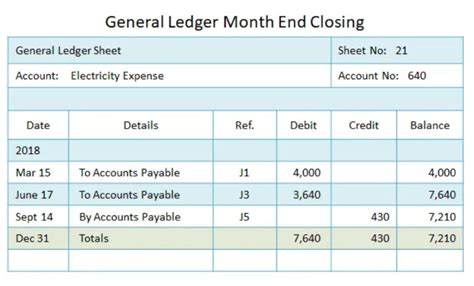
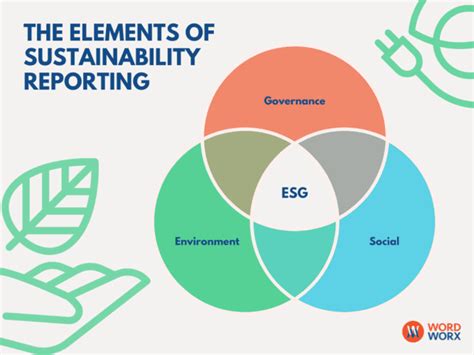
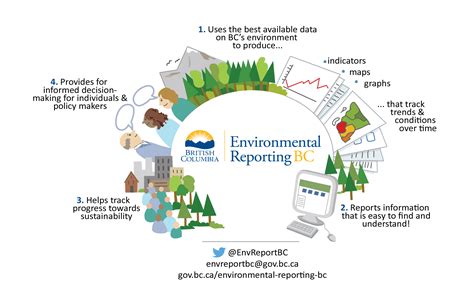
What is the purpose of a general ledger?
+The purpose of a general ledger is to provide a comprehensive and accurate record of all financial transactions within an organization, enabling businesses to make informed decisions and prepare financial statements.
What are the components of a general ledger?
+The components of a general ledger include accounts, journals, and ledgers, which work together to track and record financial transactions.
Why is the general ledger important?
+The general ledger is important because it provides a clear picture of a company's financial health and performance, enabling businesses to make informed decisions and prepare financial statements.
How can businesses maintain an accurate and effective general ledger?
+Businesses can maintain an accurate and effective general ledger by following best practices, such as regularly reviewing and reconciling accounts, implementing robust internal controls and audit procedures, and utilizing technology and automation to streamline accounting processes.
What is the future of the general ledger?
+The future of the general ledger is likely to be shaped by emerging trends, such as increased use of automation and artificial intelligence, greater emphasis on data analytics and business intelligence, and growing importance of cloud-based accounting systems and software.
In conclusion, the general ledger is a vital component of any accounting system, providing a comprehensive and accurate record of all financial transactions within an organization. By understanding the definition, components, and significance of the general ledger, businesses can make informed decisions and prepare financial statements. As the general ledger continues to evolve, businesses must be prepared to adapt and innovate to remain competitive and effective in their financial management and decision-making. We invite you to share your thoughts and experiences with the general ledger, and to explore the resources and tools available to support your financial management and accounting needs.
